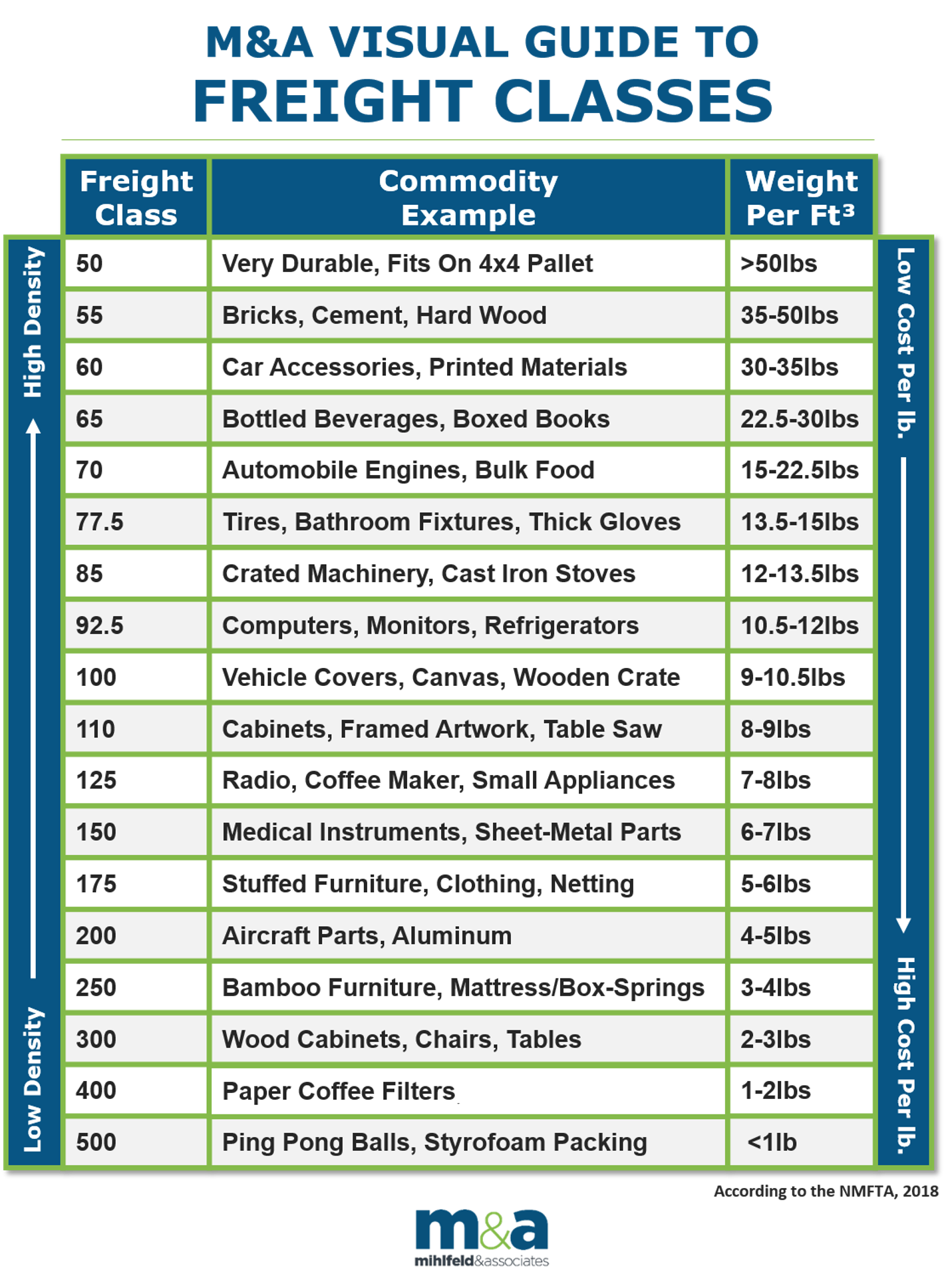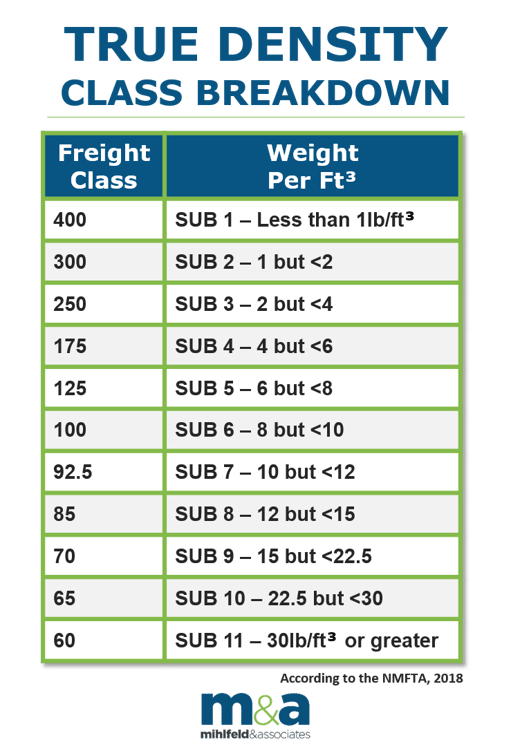What Is Freight Class?
When determining the price necessary for shipping freight Less-Than-Truckload (LTL), all carriers abide by the standard Freight Classification System established by the National Motor Freight Traffic Association (NMFTA) and published by the National Motor Freight Classification (NMFC).
All commodities, from iron to feathers, are assigned a classification within the system and prices and tariffs apply depending on the classification. There are 18 shipment classes, ranging from the least expensive per cubic foot, Class 50, to the most expensive, Class 500. The four determining factors are listed below.
1. Density & Volume
The space the item occupies relative to its weight
- Density = weight of item (lbs.) / volume (ft³)
- Volume = Length x Width x Height
2. Stow-Ability
A classification referencing the difficulty in loading and transporting items.
3, Handling
The ease or difficulty of loading and carrying the freight.
4. Liability
Probability of freight being damaged or stolen, or causing damage to adjacent freight.
Why It Matters
According to the NMFC, almost every type of freight has been classified with a standard for how that exact type of freight should be priced. I say "almost" because, although the system aims a standardizing freight rates, a large gray area still exists with certain items, and this causes a problem for shippers.
Very often freight items with ambiguous classifications, carriers will classify the freight to higher class in order to up-charge the shipper. Shippers need to familiarize themselves with the freight classification system in order to reduce costs across their whole logistics department.
The classifications are updated on a yearly basis so shippers must stay up-to-date as well. Shippers can buy the updated guide from the NMFTA Website
We are pleased to provide this reference table to better illustrate the various freight classifications.

In addition to the Freight Classification System, the True Density system further breaks down the rules used to determine freight rates. Below is the official chart for True Density.






